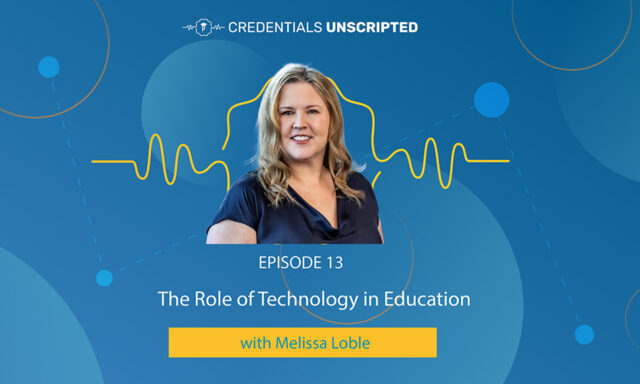
Higher Ed
The Role of Technology in Education

At Temple University, the Fox School of Business is known for its innovation, experimenting with new things in both academic and non-academic ways. So, it was the perfect place to start the university’s comprehensive learner record (CLR) initiative.
Three leaders at the institution who were instrumental in the pilot program at Temple recently shared their maiden CLR journey with Parchment’s Member Community:
But first, a brief review …
Simply put, CLRs allow students to tell the story of their educational experience, both inside and outside the classroom. A CLR often contains standardized components, like business communication, leadership skills, project experience, real-life training, strategic knowledge, growth, and more. And best of all – you decide key data elements to include – because who knows your institution’s learning framework and outcomes better than you?
It’s a new type of credential built on institutionally verified data that builds on (but isn’t intended to replace) academic transcripts for a more holistic representation of what the learner accomplished. And CLRs help employers understand workforce-readiness skills learned during the student’s academic career.
As Registrar Bhavesh Bambhrolia explained, the CLR exemplifies success, illuminates interests, and reflects the cumulative college experience. So, if CLRs are not on your institution’s radar, they should be.
According to Assistant Dean Charles Allen, the school was interested in what they could do to better substantiate the student experience, like digital credentialing. How can they connect this to students and introduce a process they can use to better market themselves? And at the same time aid employers in validating the records they receive from interested applicants?
Debbie Campbell, senior vice dean, explained that FSBN boasts of over 6,500 students and a world-class faculty. For the past 20 years, the school has had a focus on learning outside of the classroom, beginning with areas, like study abroad and internships, that encouraged students to grow, gain real-world experiences, and grasp new capacities. Again, perfect for the CLR project.
In addition, Bhavesh wanted to have the pilot set up from the beginning as the ideal CLR to scale up to other colleges. A work in progress, the CLR will eventually become a resource for all students at Temple. While goals will differ per school (or program) at Temple, the university was looking for a way to validate experiences, making them tangible and adding context to the transcript. And it had to be user-friendly, visually appealing, and sustainable.
At Temple University, it was a perfect (CLR) storm, with willing partners on all sides of the conversation. Multiple departments were involved, including the university IT staff and the Provost’s office. They shared their thought processes, participated in discussions, and made decisions. What should the CLR look like? What are the important components? What are the initial steps?
Once the stakeholders decided on the CLR data elements, they worked with the individual units that managed those data elements to coordinate data feeds and get access to systems. And in the end, all converged to create a six-page CLR document with clickable links to access more detailed information:
All coming full circle to tell the students’ story of their holistic experience.
Figure out who your champion is, and find the right program to pilot your initiative is what Debbie advised. Starting small and growing from there is a good idea for many projects, including CLRs. Our suggestion? Just get started. You don’t have to have it all figured out to start making progress.
According to Charles, it’s never too early to start the conversation because the process will take longer than anticipated. (Change and innovation can be scary, and it’s not something everyone embraces, but that’s where growth happens!) The university will also be gathering employer and student feedback to make the CLR an even more valuable and effective document.
When you really believe in the idea, as Bhavesh concluded, find others who will believe in it, too. Imagine your ideal CLR at the university level. Then look at what’s feasible now. And don’t let any data challenges stop you.
To learn more from Temple University’s CLR thought-leaders and innovators, view the entire webinar here. Get more details about their experiences and outcomes, including an informative Q&A session with the audience.
Then, contact Parchment today to start the conversation around your CLR adventure.
